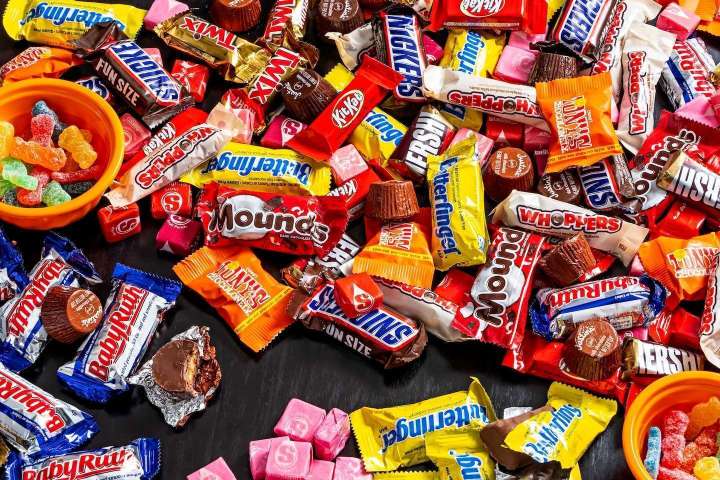Trick-or-treaters on the hunt for Kit Kats, Twizzlers and Reese’s Peanut Butter Cups might be in for a disappointment, or rather the people who like to hand them out might.
Hershey warns ‘trick-or-treat’ supply chain may cause candy shortage

The war has made some ingredients scarce, and the efforts of European nations to isolate Moscow by restricting its oil and gas imports will affect Germany’s energy market, where the Pennsylvania-based company said it sources equipment and supplies.
Hershey said it began producing Halloween candy and chocolate in the spring. But because its everyday and seasonal products use the same production lines, the company was forced to recalibrate. When asked why the company had not shifted to an “all-hands-on-deck” operation to produce as much seasonal candy as possible, chief executive Michele Buck said it opted to prioritize the more immediate need of replenishing store shelves now.
“It was a tough decision to balance that with the seasons, but we thought that was really important,” she said in a call with analysts Thursday after the company released its second-quarter results. “We had opportunity to deliver more Halloween, but we weren’t able to supply that. And we were really producing.”
Chief Financial Officer Steve Voskuil chimed in to emphasize that the company was moving with sufficient urgency: “It’s definitely all hands on deck.”
Americans have turned to sweets during the stress and disruption brought on by the pandemic. Chocolate and other candy sales surged 11 percent in 2021, according to the National Confectioners Association, after swelling 15.4 percent in 2020, when the public health crisis first forced many people to stay at home. Total sales for the confectionery category hit nearly $37 billion last year, according to the organization, and are projected to reach $44.9 billion by 2026.
Hershey has similarly seen its fortunes rise: Net sales spiked 19 percent in the second quarter to $2.4 billion, compared with the year-ago period. The company raised its 2022 sales outlook from 10 to 12 percent growth to 12 to 14 percent, pointing to strong consumer demand and price increases.
Chocolate and candies have also taken on a larger role in social gatherings as people found creative ways to celebrate special occasions after prolonged isolation, embracing gifting and focusing on their own emotional well-being.
Halloween is one of four major sales seasons for the industry; the others are Valentine’s Day, Easter and the winter holidays. During the eight-week sales period around Halloween, sellers raked in $4.5 billion last year, an increase of roughly 11.7 percent from the year prior and representing more than 12 percent of sales for the whole year.
But supply chain disruptions remain a chronic problem for a manufacturers of all stripes, forcing companies to make difficult product decisions. This week, the maker of Choco Taco said it was discontinuing the chocolate-dipped ice cream novelty after a nearly four-decade run, citing pandemic-era challenges.
“Over the past 2 years, we have experienced an unprecedented spike in demand across our portfolio and have had to make very tough decisions to ensure availability of our full portfolio nationwide,” said Unilever, the parent company of Klondike that made the Choco Taco.
Hershey shares ended 2.8 percent higher Thursday, to close at $224.27, on a day when Wall Street recorded its second consecutive day of gains.
The major U.S. indexes climbed despite the release of data showing that the economy had shrunk for a second straight quarter, at an annual rate of 0.9 percent, raising recession fears amid decades-high inflation. The Dow Jones industrial average added 332 points, or 1 percent, to close at 32,529.63. The broader S&P 500 index jumped 1.2 percent, to land at 4,072.43, while the tech-centric Nasdaq composite index climbed 1.1 percent to settle at 12,162.59.






